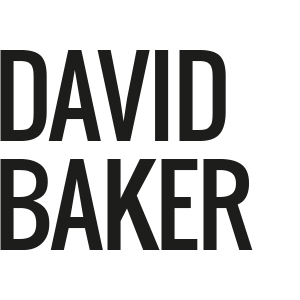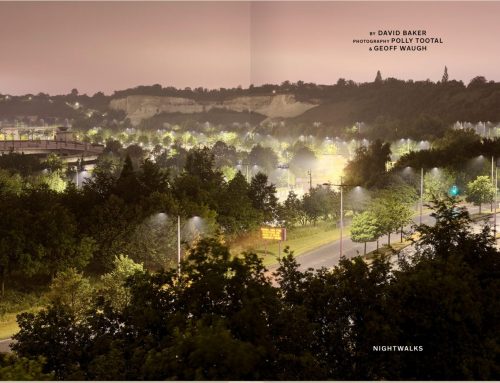The founder of Wired and a former Space Shuttle coder are reverse-engineering chocolate to make the perfect bar
Wired, February 2010
It’s 4am, and in a silent warehouse on San Francisco’s dockside a light goes on and a wall-mounted webcam casts its eye around a cluttered room.
To the right there’s a desk with a PC, files And documents. On the far wall, translucent plastic Tupperware boxes are stacked on a shelf, each sporting a short alpha-numeric code. But the camera stops on a row of food mixers, softly whirring away and fed from above by shiny silver ducting.
There’s a pause and a minute change in the room’s ambient hum as a motor is slowed. Then the light goes off and the warehouse is bathed again in the soft blue of a pre-dawn Bay Area night.
Across the city, in his bay-view house on the Filbert Steps, Timothy Childs clicks off his iPhone, returns it to the bedside table and goes back to sleep. In the morning he’ll be able to see if his recipe tweak has worked. Welcome to TCHO, the world’s most technology-obsessed chocolate company.
TCHO was set up in 2005 by Childs and Louis Rossetto, founding editor of US Wired and something of a post-digital-revolution guru. The pair never expected to find themselves making chocolate. Childs had been developing virtual-reality systems and Rossetto, since leaving Wired in 1998 on its purchase by Condé Nast, had been investing in high-tech start-ups. But a chance conversation led them to the industry’s as yet unfulfilled quest for the perfect dark chocolate. The challenge, which spanned agriculture, genetics, chemistry, biology and logistics, proved irresistible. Along the way they would reinvent ancient supply chains, use the internet to improve the lives of Peruvian hill farmers and, if Rossetto is to be believed, help usher in a new age of social responsibility.
TCHO’s story started when Childs, now 46 and a self-styled “serial entrepreneur”, was casting around for his next big project. A restless schoolboy of a man, whose mind darts from topic to topic with a wide-eyed excitement, he had made a good living since the early-90s, working in the then emerging field of real-time 3D web graphics. One of the founders of Web3D RoundUP, a notoriously riotous convention of early graphics obsessives, he bought and sold his way through various small start-ups until he ended up developing visualisation software for Nasa’s Space Shuttle project in Cape Canaveral, Florida.
“We had cameras look at the Space Shuttle when it was on the ground,” he says, “to see how the flaps moved and the doors opened and so on, and then we would map that into a real-time 3D model that we could show to the managers of the project. It was really cool.”
A few months before moving to Florida, however, a former colleague of Childs’s, Rob Polevoi had introduced him to one of the unresolved conundrums of the chocolate world: how to make high-quality dark chocolate that would melt in the mouth as silkily as its milky counterpart. Polevoi had stayed on at their previous company but was spending most of his spare time experimenting with chocolate. His early attempts, says Childs, were “unlike anything I had ever tasted”.
At the beginning of 2003, Polevoi proposed that they go into business together, with Childs providing the marketing nous. Childs was sceptical, however. Chocolate, he felt, was too crowded a market and, besides, he was comfortable in Florida and the Nasa project was propped up by good federal money.
But less than a month later, the Space Shuttle Columbia disintegrated on re-entry, killing all seven crew members. Everything changed.
“It was a massive shock,” he says, “very sad for everybody, just crappy. Of course, all contracts were put on hold and so I said to myself, ‘I guess I am making chocolate.'” He spent the next two years fundraising and teaching himself all he could about chocolate. (“This amazing, amazing, concoction really started catching me,” he says.) And then, in 2005, he flew to Du¨sseldorf for Interpack, a thrice-yearly fair for the food-processing and -packing industry.
“Interpack blew my mind,” says Childs, when we meet at TCHO’s San Francisco headquarters. “I had no idea how large an industry chocolate was. There were six manufacturers just of enrobing lines, which do chocolate coatings. I thought, ‘This is an industry that can support six manufacturers of the same piece of equipment at a price point of $800,000 to $2 million-plus. Wow!’ Alight bulb went off. And I said, ‘OK, we are making chocolate.'”
Chocolate is one of the most complex substances we eat, but its component parts are deceptively straightforward.
In its purest form it contains cocoa fat and solids; sugar; perhaps some vanilla to bring out the flavour; and sometimes lecithin, which acts as an emulsifier and prevents the fat and solids from separating. And that’s about it. (You may want to take a moment look at the unexpected extras in your favourite bar.)
Good chocolate, however, has physical, structural and chemical properties that can come only from an elaborate and multivariate production process. It must, for example, melt just below (human) body temperature, at about 35°C, allowing it to flow smoothly and slowly over the tastebuds. A lower melting point means a pocket full of mush; higher, and the chocolate forms a tacky paste on the roof of the mouth. But, just as importantly, to retain its characteristic “snap”, it must melt quickly and suddenly when it gets to this point and not before.
And that is just the texture. Chocolate’s sophisticated flavour is the result of hundreds of interrelated chemical reactions, many of which are still not understood. These depend on almost infinitesimally minute adjustments to the three key stages of chocolate-making: fermentation; roasting; and a kind of mixing-mashing reducing hybrid called “conching”. Childs, the self-styled “eternal tweaker”, had found a new project to tweak.
Soon after the Columbia disaster, Polevoi and Childs set up a company called Cabaret, based in San Francisco, with Polevoi in charge of production and Childs responsible for marketing and business development. But the venture struggled to get off the ground. According to Clay Gordon, who blogs about the industry at thechocolatelife.com, there were disagreements about sourcing. Childs says Cabaret had a good proposition but that it wasn’t scalable to commercially realistic production levels.
By the end of 2004, however, he was beginning to realise that, just as Napa Valley had reverse-engineered French wine to produce something consistently better, he could do the same for chocolate – an industry many parts of which, as Gordon puts it, were (and are) still in the stone age. Supply routes, cacao cultivation, the selection and fermentation of the freshly harvested beans were in the hands of local farmers who had often never seen a chocolate bar made from their produce. Inconsistencies in the cocoa liquor shipped from suppliers to the big manufacturers in the West would traditionally be ironed out by blending and additives. Now, with the free flow of data that the digital revolution had engendered, the distance between San Francisco and Madagascar could be measured not in thousands of kilometres but in kilobits per second. So, in 2005, Childs, Rossetto, who had been a silent investor in Cabaret, and Karl Bittong, a 40-year veteran of the chocolate industry, moved into an old warehouse on San Francisco’s Pier 17 and a chocolate revolution quietly began.
On a hillside in northern Peru, Felipe Figueredo switches on his Mac and fires up his internet connection. The area is sparsely populated, electricity comes from solar panels, and across a small river is thick jungle, giant anacondas and flocks of colourful blue-headed parrots. But Figueredo is not some latter-day Doctor Livingstone. Instead he is one of the outlying nodes in a data network that stretches as far as Ecuador, Ghana and Madagascar and is centred on a PC in Childs’s cluttered lab in San Francisco. The files he is uploading contain information about the local temperature, humidity, rainfall and wind speed and the state of the hundreds of kilos of cocoa beans that are fermenting around him in the co-operative he manages. Once he has uploaded the data he will FedEx sample beans back to TCHO where they will be analysed for taste, texture and acidity, and correlated with his earlier weather reports.
Fermentation is the first, and perhaps the most important, stage on the route from cocoa bean to chocolate bar. For five or six days after harvesting, the beans are piled together and heat – generated by a reaction between the sugary gloop that surrounds them and the yeasts on their surface – causes their temperature to rise. This prevents them germinating but it also starts a series of reactions that create flavour precursors such as sugars and acids. At this stage, the flavours are crude. They are honed later during roasting and conching, but there’s a chocolatey taste to even an unroasted fermented bean.
For someone used to the rigour of designing software for the Space Shuttle, this process was frustratingly unmanaged. Some beans came out of the fermentation full of flavour, others flat or acidic. In mass production, blending of beans from different sources can even things out. But high-end chocolate comes from a single source; so a producer has to choose between chocolate that tastes subtly different from harvest to harvest (as wine vintages do) or managing the fermentation process better, so that, as much as possible, their beans generate the same complex flavours. Childs chose the latter and set about collecting data.
“Fermentation is affected considerably by the weather,” he says, “especially temperature and humidity, and growers have often had to guess how long to leave beans fermenting.” In Peru, Figueredo is using a modified weather-monitoring system that TCHO has installed. Connected to temperature probes inside the piles of fermenting beans, the system uses a low-range wi-fi transmitter to pass data on the state of the beans to his laptop.
As the fermentation continues, Childs correlates this with local weather data and sends instructions back to Figueredo: to mix a particular box some more; leave this batch of beans for an extra day or so; perhaps add some orange peel to the mix, something, he says, “which helps promote various of the fermentation reactions”.
“What I am trying to do is to find ways to quantify subjective experience, to get subjectivity out of the way and replace it with replicable systems.” It’s a slow process: cacao trees only fruit twice a year, but by the end of this year his hope is to have enough information to predict the outcome of fermentations whatever the local conditions.
By December 2007, TCHO was producing early versions of its single-source chocolate. But it needed feedback and was unable (or perhaps unwilling – neither Childs nor Rossetto will say) to pay for market research. Instead, Childs issued “beta version” chocolate bars.
Wrapped in US Air Force weapons-grade packaging (a cheeky hangover from Childs’s Space Shuttle days and an early indicator of how much TCHO would come to reject the traditional romanticism of the chocolate industry), the bars, with names such as “Beta C Ghana 0.21”, were put up for sale on TCHO’s website at $5 each with a request for feedback. The first batch of 4,000 sold out almost instantly and, acting on the feedback he received, Childs issued a new version within days, with the result that, 12 months and 1,026 iterations later, at the end of 2008 the company launched its first v1.0: “TCHO Chocolatey”.
The name was important. As well as upending the processes of the chocolate industry, Childs has set his sights on the way chocolate is marketed. He hates the “wine-speak” rife in the world of fine chocolate (“length”, “fluid”, “tannic”) and the almost ubiquitous percentages on packets. (“Percentages of what?” he says. “It’s meaningless.”) Instead he sought to design a scientific way of speaking about flavour that would be immediately understood by consumers. The result was the TCHO “flavour wheel”, made up of six segments: “chocolatey” plus “nutty”, “fruity” and “citrus” – with “floral” and “earthy” to follow, he says, “when we find the right beans”.
The flavour wheel is the direct result of Childs’s tweaking of the fermentation, roasting and conching processes – there are no nuts, fruits or citrus essences in any of TCHO’s chocolate bars. Instead Childs, like a particularly analytical alchemist, has drawn those flavours out of cocoa beans using hard data, a lot of patience and a process that lends itself to iteration. And the centre of all of that industry, home to some very special-tasting chocolate, is TCHO’s “flavour lab” in San Francisco’s Pier 17.
TCHO’s combined headquarters and factory takes up about half the ground floor of a warehouse on what was once was one of the busiest ports in the Pacific. Inside, most of the space is used to produce the company’s high-end range of chocolates. As well as 60g bars of “chocolatey”, “fruity” and so on (on sale at tcho.com for $5 a piece), there is drinking chocolate, chocolate-covered fruit and nuts, medicinal-looking tubs of TCHO-A-Day chocolate squares, and a range of chocolate for professional chefs. Out front is a small, open-plan office where TCHO’s staff, including Childs and Rossetto, all have desks. On the reception are bowls of TCHO chocolate to tuck into while you wait.
Duck through a doorway, however, and you are in a ten-square-metre room that is at the chocolate-scented heart of the company’s R&D: the TCHO flavour lab and the site of Childs’s early-morning virtual visit.
Almost everything here started life as something else. The mixers were designed to grind spices in Indian restaurants, now they temper cocoa paste.They are connected to a set of room heaters that came from Costco, and the tape that holds them together was designed for the Space Shuttle programme. In a corner, a modified turkey oven now roasts cocoa beans. Another home-made device, which looks like a cross between the back of a washing-machine and an under-sink drainage system, cracks them and removes the shells. And everything is connected to an ethernet node with its own IP address, which is how Childs monitors and controls the lab remotely from his iPhone.
The DIY approach doesn’t stop here. The equipment in the TCHO factory came from a disused chocolate plant that Bittong found in East Germany. Much of the company’s original funding was spent bringing a series of 70s tanks, moulding lines and coolers – by some of the big names in the chocolate world, such as Nagema and Scottish company MacIntyre – up to 21st-century standards and adding software-controlled sensors throughout. One of the original control panels, all Dymotape labels and huge coloured buttons, sits against one wall as a relic of a time when technology really did take up space and required solid-state switches under the desktop (which, of course, really was a desktop).
TCHO began small-scale production of its range of chocolate bars, drinking chocolate and catering packs at the beginning of 2009 and says sales are good (despite repeated requests, it won’t be drawn on financials). However, ultimately, chocolate may not be the only thing TCHO redefines.
Just as the company can monitor the minutiae of fermentation thousands of kilometres away, the sensors dotted around its production plant allow it to visualise every stage of chocolate-making on its home turf.
On the factory floor is a flatscreen TV, on which an avatar wanders around a virtual TCHO factory. The system is still at the demo stage, but Childs hopes to have it providing real-time information about what is going on inside the vats, mixers and pipes, where it is too dark – and too hot – for a human to poke around. Soon, he says, technicians will be able to walk around the factory, hold up their iPhones and “see” on the screen what is happening in each tank.
It is this visualisation, the tearing away of obscurity and obfuscation, that is Childs’s overriding interest. With Rossetto, he wants to “pierce the veil”, as he puts it, of how chocolate is produced, what it is made of, how it should taste. And that extends to his factory. “Transparency” is a word that crops up many times in conversations with TCHO employees and TCHO welcomes its competitors into its factory. Revealing hidden patterns – whether the chemistry of fermentation or, as in Rossetto’s case, the shadow slavery casts over parts of the industry – is the closest the company appears to come to having an ultimate mission. It’s no coincidence that the wallpaper on Childs’s iPhone is a picture of a sand mandala – “a 2D representation of a 3D building of an n-dimensional space”, as he describes it. Childs is in the business of revealing what is kept out of sight.
Meanwhile, he delights in his factory and the sheer scientific pleasure of it all.
“I am constantly thinking about creating models that can replicate like little nano machines,” he says. “I look at my equipment and I want it to be able to do a couple of hundred bars, then maybe 10,000 bars, then maybe a million.”
Childs is confident that TCHO can punch above its weight in an industry dominated by multinationals. It can adapt quickly to consumer taste and demand. It can develop and beta-test new products on an intelligent and very willing research group for very little R&D investment. And, though he won’t speak about this directly, it will eventually be able to offer its augmented-reality technology to any industry where data is better off visualised than read as rows of numbers.
By the end of this year, Childs says, TCHO will have sourced the beans for “earthy” and “floral” and, presumably, he will be tweaking the mix. That is if he hasn’t worked out a way for a machine to do the tweaking for him. In which case, look out for a man with a mandala on his iPhone making waves in another industry ready for a dose of creative disruption.








